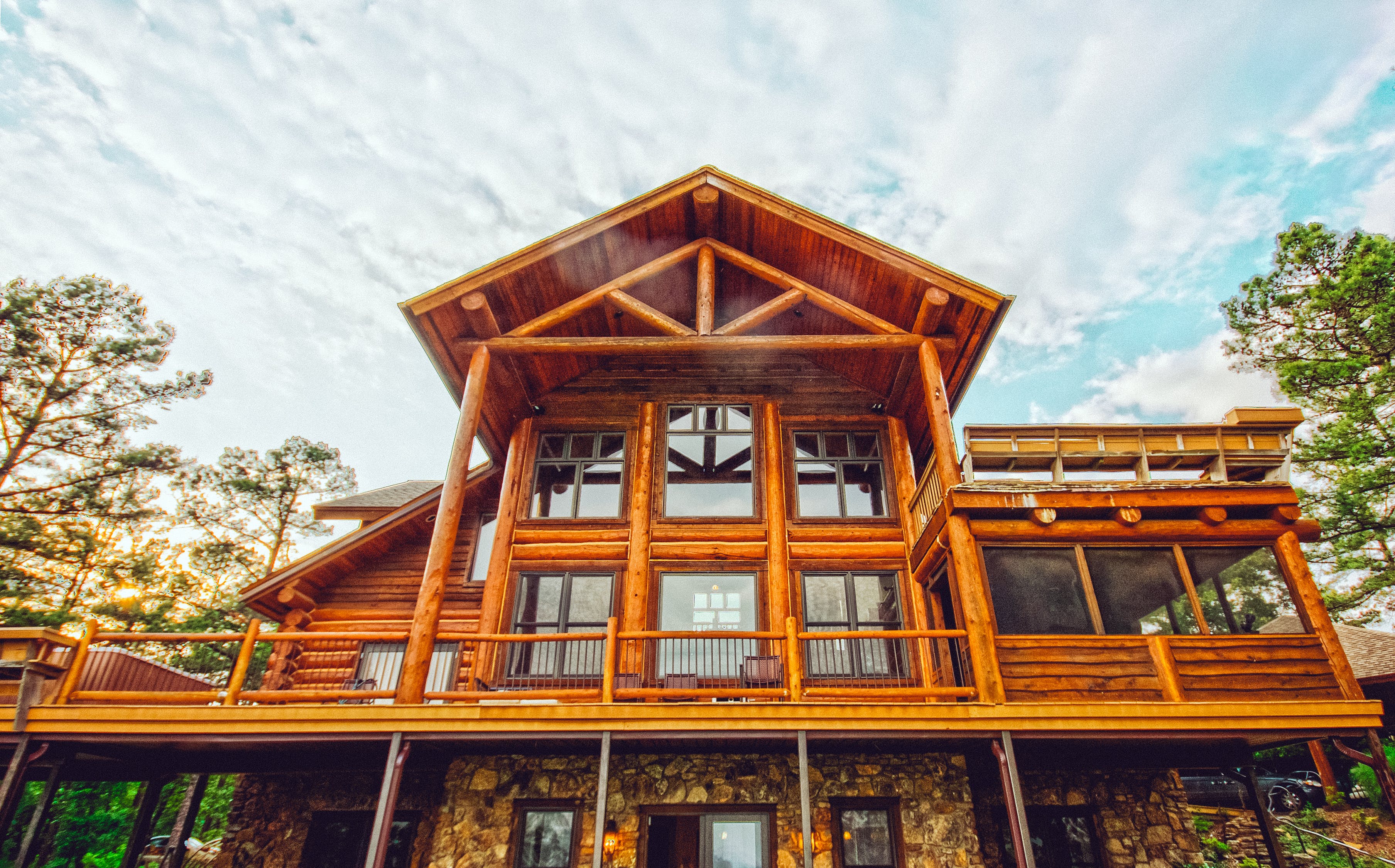Not all homes are alike. For instance, log homes differ significantly from conventional homes. In fact, they require comps with other log homes to do an appraisal. When it comes to the inspection, a log home inspection differs from a conventional home. In this post, Magnolia Home Inspection Services describes what you can expect during a log home inspection compared to a conventional one.

A Proper Log Home Inspection Should Investigate Settling
All homes can settle no matter what building materials are used. However, log homes tend to be more susceptible to settling. In addition, how and why they settle can distinguish them from conventional homes. A log home inspection should account for settling.
Shrinkage
Settling is normal and expected in log homes. Therefore, log homes are constructed keeping settling in mind. But what happens if this doesn’t work? What happens is that when logs lose moisture, they shrink. When the logs shrink, the walls settle and lose some height. In other words, settling isn’t the issue as much as the extent of settling and the accuracy of specific components constructed with settling in mind.
Gables, Doors, and Windows
Gabled roofs attach to the gabled walls at each end of a connecting ridge. If shrinkage causes the walls to lose height, it puts added stress on the roof connections. As you can imagine, the issue presents significant risk.
Just like walls connect to the roof, they also join to doors and windows. Therefore, settling also impacts doors and windows. When logs shrink and settle, they shouldn’t move door and window frames if the contractor left enough space to account for the shrinkage.
Conventional Interior Walls
Unlike log walls, drywall partition walls don’t settle. If the partition walls are framed from floor to ceiling, the log walls settle, but the partition walls don’t. Consequently, the partition walls are left to bear the weight they aren’t meant to handle. A certified log home inspector knows how to look for framing methods that allow log walls to settle without adding extra weight to partition walls.
A Proper Log Home Inspection Should Look for Wood Decay
Water
Both log extensions and lower wall logs are at risk of water absorption from exposure. Log extensions’ exposed end-grain absorbs water faster, and lower logs get extra water from splashback during rain. Water should bead up on the wood. On the other hand, if water absorbs into the wood, that’s something that requires a further look.
Wood-Destroying Organisms
Log homes are more prone to wood-destroying organisms, including rot, mold, insects, and woodpeckers, than conventional homes. Some insects are harmless, while others can cause extensive structural damage—Carpenter ants, termites, and carpenter bees all present risks. A qualified home inspector knows the signs to look for and how to remediate them. So say goodbye to pesky pests!
Schedule a Log Home Inspection
Magnolia Home Inspection Services serves Houston and the surrounding area. Schedule a residential, commercial, or specialty inspection by calling (832) 303-8048.


